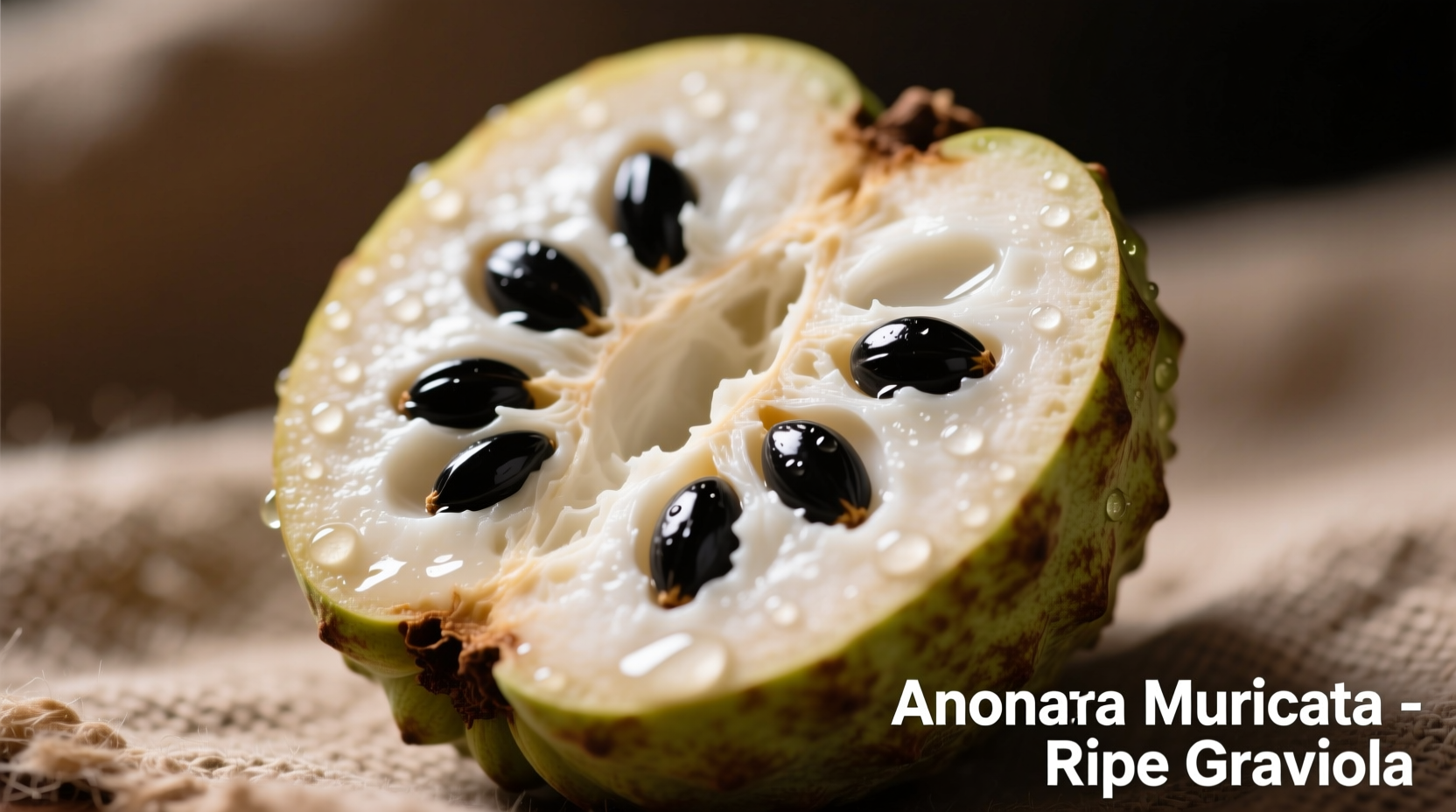Discovering Graviola's Unique Flavor Journey
When you first bite into a perfectly ripe graviola, you're greeted with an explosion of tropical complexity that distinguishes it from more common fruits. This spiky green fruit, also known as soursop or guanabana, offers a sensory experience that's both familiar and exotic—a quality that has made it a staple in Caribbean, Central American, and Southeast Asian cuisines for generations.
Breaking Down the Taste Profile
Graviola's flavor isn't easily captured by a single descriptor. Its taste evolves as you eat it, creating a multi-dimensional experience:
- Sweet-tart foundation—natural sugars balanced with gentle acidity
- Fruit fusion—strawberry's sweetness meets pineapple's tang with citrus undertones
- Creamy texture—reminiscent of banana or custard apple
- Subtle herbal notes—a distinctive grassy or herbal finish that prevents cloying sweetness
- Floral hints—some detect delicate floral notes in premium specimens
How Ripeness Transforms Graviola's Flavor
Unlike many fruits that simply become sweeter as they ripen, graviola undergoes a dramatic flavor evolution. This timeline shows how ripeness affects taste characteristics:
| Ripeness Stage | Texture | Flavor Profile | Best Uses |
|---|---|---|---|
| Underripe (green, firm) | Firm, almost crunchy | Sharp acidity, minimal sweetness, pronounced herbal notes | Cooked applications, green smoothies |
| Transitioning (yellow-green) | Softening, slightly yielding | Balanced sweet-tart, emerging tropical notes | Fresh eating, sorbets |
| Perfectly ripe (yellow-green, slightly soft) | Creamy, custard-like | Rich sweetness with complex tropical notes, minimal acidity | Fresh consumption, premium desserts |
| Overripe (dark spots, very soft) | Excessively soft, mushy | Fermented notes, diminished complexity | Limited culinary value |
Texture: The Secret to Graviola's Appeal
Graviola's texture significantly influences how we perceive its taste. The flesh contains numerous large, inedible black seeds surrounded by fibrous material, but the edible portion offers a remarkable contrast:
When perfectly ripe, graviola delivers a luxuriously creamy mouthfeel similar to ripe avocado or custard apple, yet maintains enough structure to feel refreshing rather than heavy. This unique texture allows the complex flavor notes to linger on the palate, creating a longer-lasting sensory experience than many other tropical fruits.
How Graviola Compares to Other Tropical Fruits
Understanding graviola's taste becomes easier when comparing it to more familiar fruits. While no single fruit captures its complete profile, these comparisons help set expectations:
- Strawberry + Pineapple—provides the sweet-tart foundation
- Banana—contributes the creamy texture component
- Custard Apple—shares the rich, dessert-like quality
- Passion Fruit—similar aromatic complexity
- Papaya—comparable subtle herbal notes
Food scientists at the University of Florida's Tropical Research and Education Center note that graviola contains over 100 volatile compounds contributing to its distinctive aroma profile, far exceeding the complexity of more common fruits like mango or pineapple (University of Florida IFAS).
Regional Flavor Variations You Should Know
Graviola's taste isn't uniform across growing regions. Agricultural studies reveal notable differences based on climate and soil conditions:
- Caribbean varieties—tend toward brighter acidity with pronounced citrus notes
- Central American specimens—often exhibit richer sweetness with stronger banana-like qualities
- Southeast Asian cultivars—typically show more pronounced herbal characteristics
These regional variations explain why travelers might experience different taste profiles when encountering graviola in various countries. The USDA's Agricultural Research Service documents how soil mineral composition directly affects the fruit's sugar-acid balance (USDA ARS).
Practical Tips for Experiencing Authentic Graviola Flavor
To truly appreciate graviola's distinctive taste, follow these professional recommendations:
- Choose carefully—look for slightly soft fruit with minimal blemishes; avoid completely green specimens
- Chill before serving—enhances flavor complexity and provides refreshing contrast to tropical heat
- Remove seeds completely—they contain compounds that can impart bitterness
- Consume immediately after cutting—flavor degrades rapidly once exposed to air
- Pair with complementary flavors—coconut, lime, or mild herbs enhance rather than compete

Why Graviola's Taste Matters Beyond Flavor
Understanding graviola's taste profile isn't just about culinary enjoyment—it has practical implications for selecting quality fruit and creating authentic recipes. The flavor directly indicates ripeness level, which affects both nutritional content and culinary applications.
Food historians note that indigenous communities across the Americas developed sophisticated ripeness indicators based on subtle flavor changes, allowing them to maximize both taste and nutritional benefits (USDA National Agricultural Library). This traditional knowledge remains relevant for modern consumers seeking authentic graviola experiences.
Bringing Graviola Flavor into Your Kitchen
Whether you've found fresh graviola at your local market or are working with frozen pulp, understanding its flavor profile helps you use it effectively:
- Fresh consumption—enjoy perfectly ripe fruit with a squeeze of lime to enhance natural acidity
- Beverages—blend with coconut water for authentic Caribbean-inspired drinks
- Desserts—use in sorbets or ice creams where its complex flavor can shine
- Culinary pairings—complement seafood dishes with underripe graviola's citrus notes
Professional chefs emphasize that graviola's flavor works best when treated as a featured ingredient rather than a background note—its complexity deserves center stage in dishes.











 浙公网安备
33010002000092号
浙公网安备
33010002000092号 浙B2-20120091-4
浙B2-20120091-4